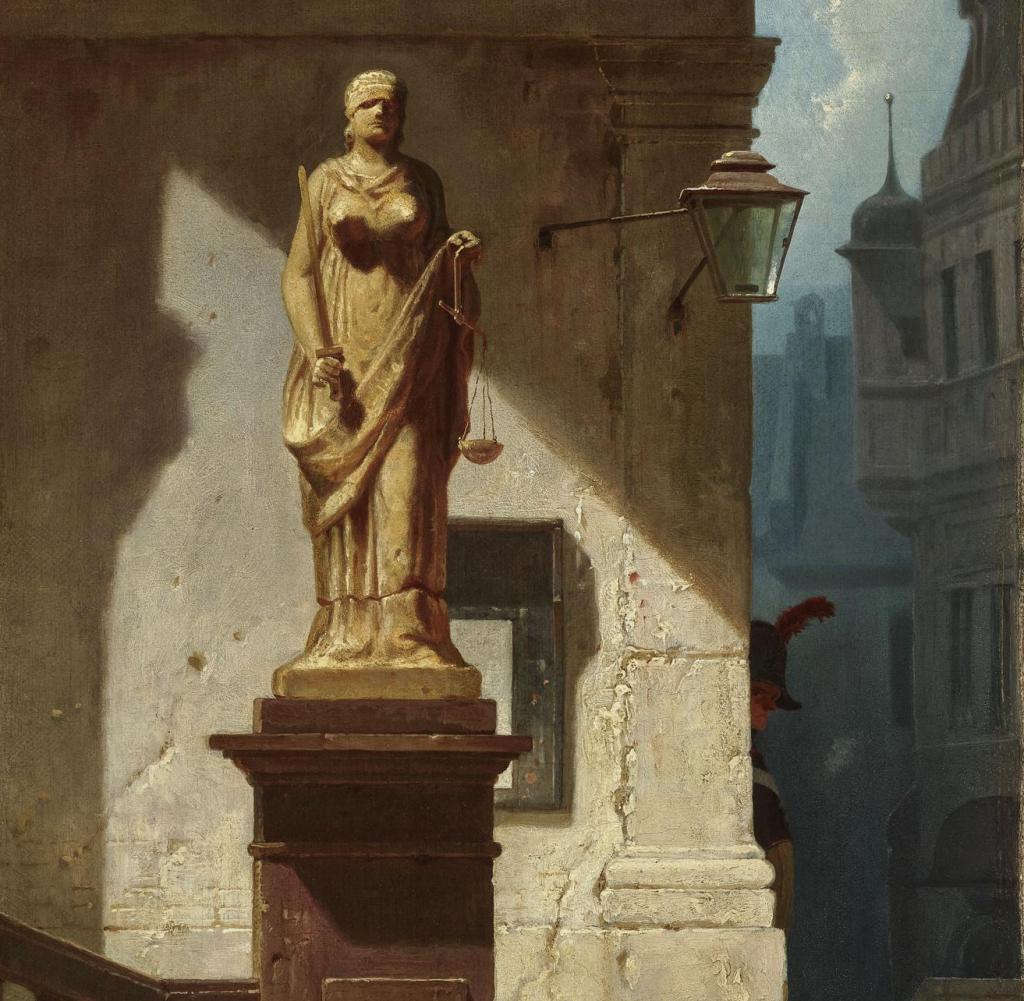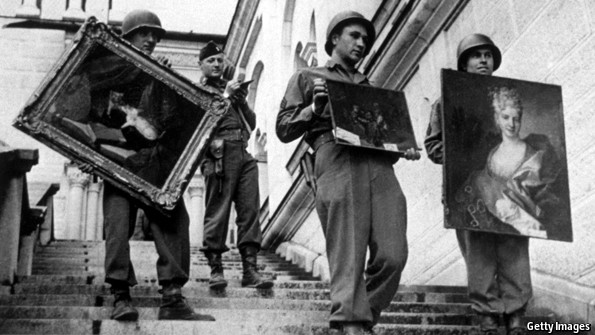
The auction house Neumeister in Germany held a live auction earlier this year in May for the first time when the country was easing up on their lockdown restrictions. One of the main pieces that was being auctioned was a painting by Carl Spitzweg named The Eye of the Law (Jutitia). It sold for $773,000 and was painted in 1857. The artwork depicts the corruption of justice as the base of Lady Justice is cracked, the scales are broken and she’s illustrated wearing a blindfold, thus it is inferred she is blind to the world around her where justice is not being upheld. Originally, the painting was owned by Leo Bendel, who was a Jewish art collector and tobacco merchant prior to World War ll. He sold the painting in 1937 to Galerie Heinemann in Munich to make money to escape the country’s dictatorship and was eventually arrested in 1939. In 1938, the painting was in the hands of art collector and dealer Maria Almas, and was planned to be put in the Fuhrer Museum in Adolf Hitler’s hometown of Linz, Austria. Despite his efforts of selling one of his paintings to avoid being captured and Nazi Germany ultimately buying the piece, Bendel later died in Buchenwald concentration camp in 1940.
In 1945, the painting was taken by the Allies and was held at Munich’s Central Collecting Point, which was established to collect items of culture that were confiscated by Nazi Germany. After a long wait, the painting found a final resting place in August 1961 in West Germany, in the Office of the Federal President in Bonn. However, in 2007, the painting was removed from the residence of the president after it’s tumultuous past was brought to light. Recently, in 2019, the painting was returned to its rightful heirs.
The fact that this artwork was used for decoration in the presidential office of West Germany for 46 years, and its history was never questioned, is ironic in a few ways. First of all, the painting was originally owned by a Jewish man who was captured and murdered by the country of Germany, only for this piece to be exclusively shown in Germany. Also, the painting shows how Lady Justice is blind to the injustices of the world, and justice is inherently broken, yet some would say that Nazi Germany caused one of the worst hate crimes in all of human history. Ultimately, these situations of art resurfacing from past historical events begs the question of who is responsible for the art’s history and eventual destination. Does the art go to the family of the original owner, if they have any? And if not, and it ends up with a private collector, do they have to disclose previous ownership to potential museums? Is it the country’s responsibility to understand the history of their cultural pieces? Is it ethical to sell a painting for several hundreds of thousands of dollars that was once owned by a man who was killed by a dictator who had severe, eugenicist opinions? Consider these questions for yourself.







